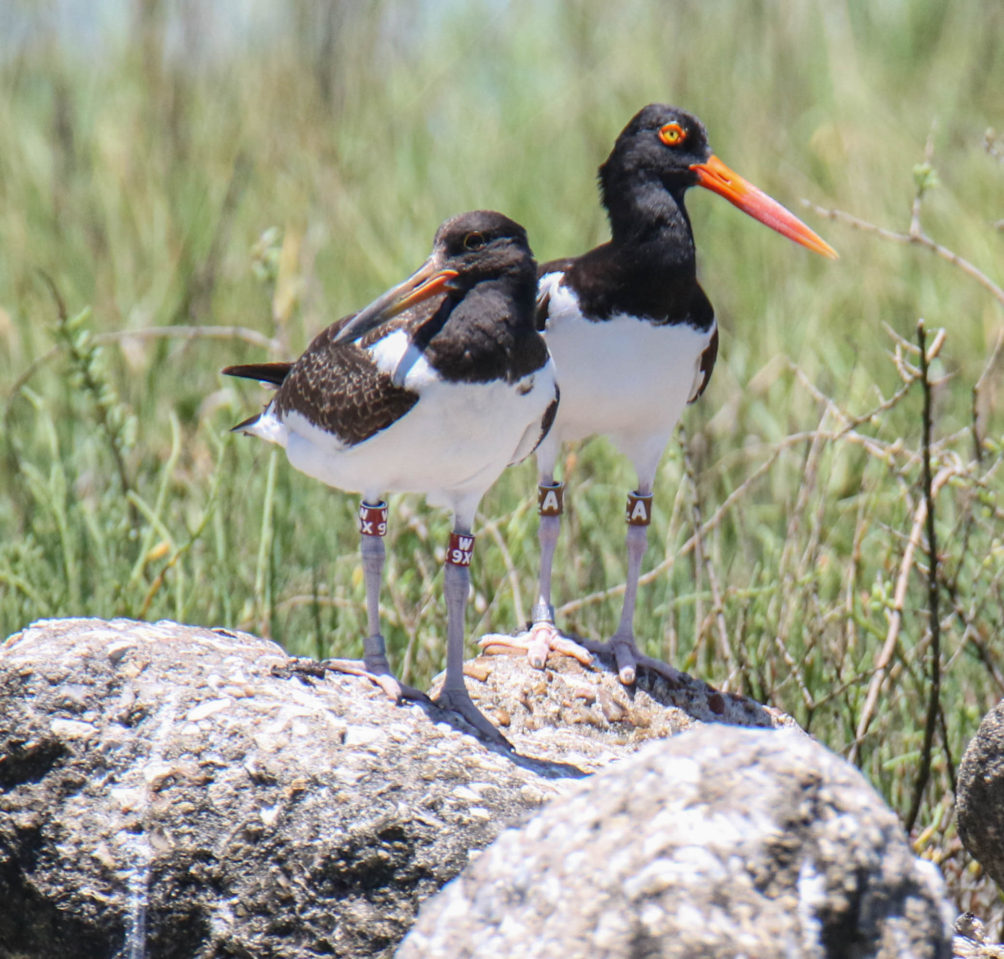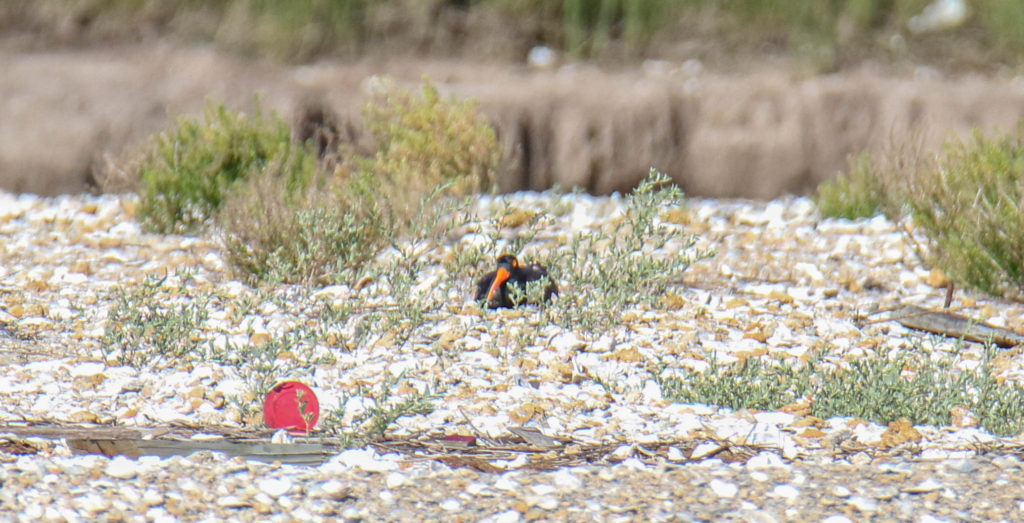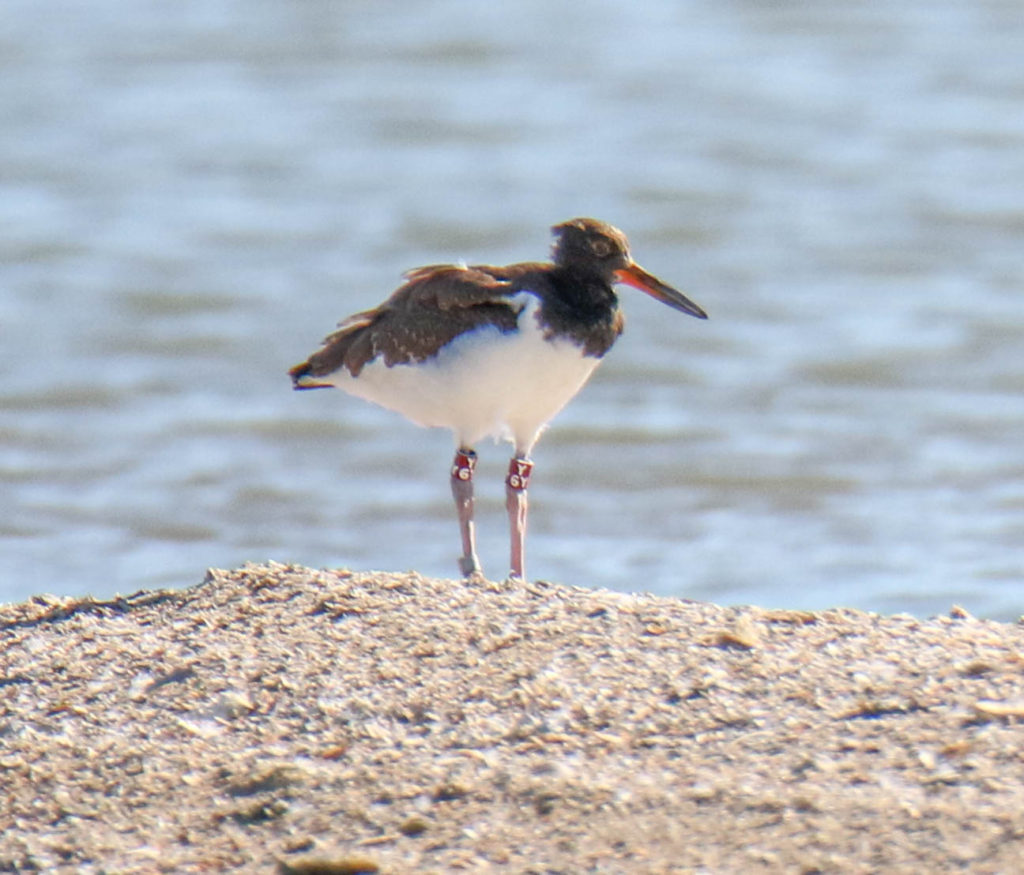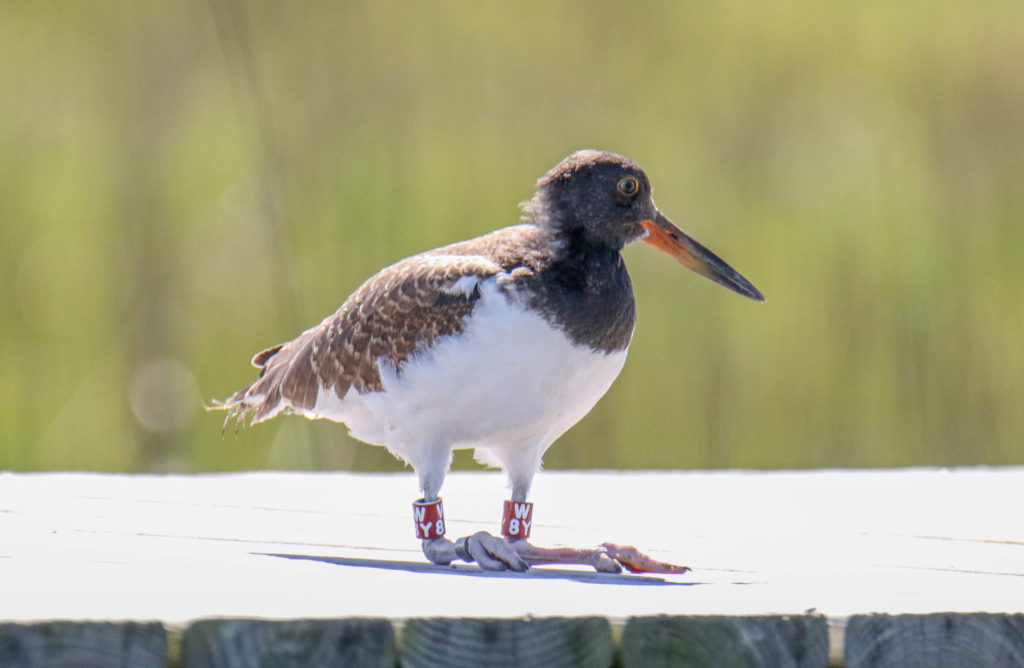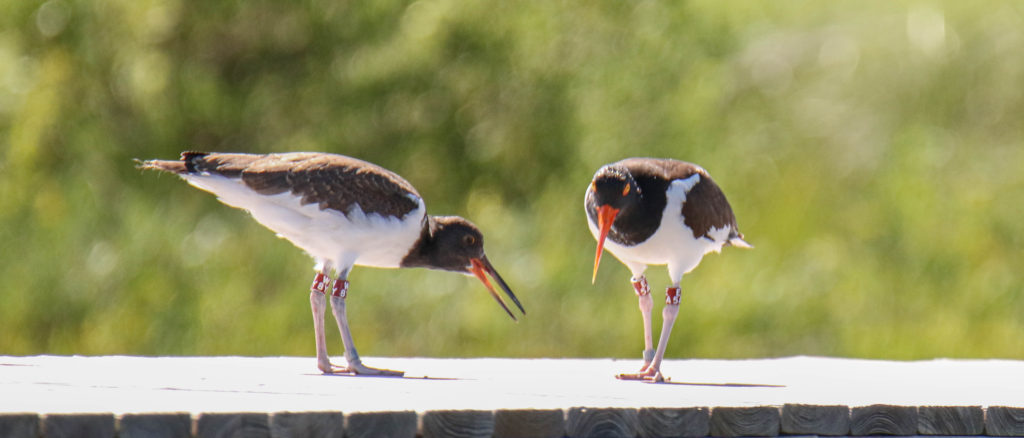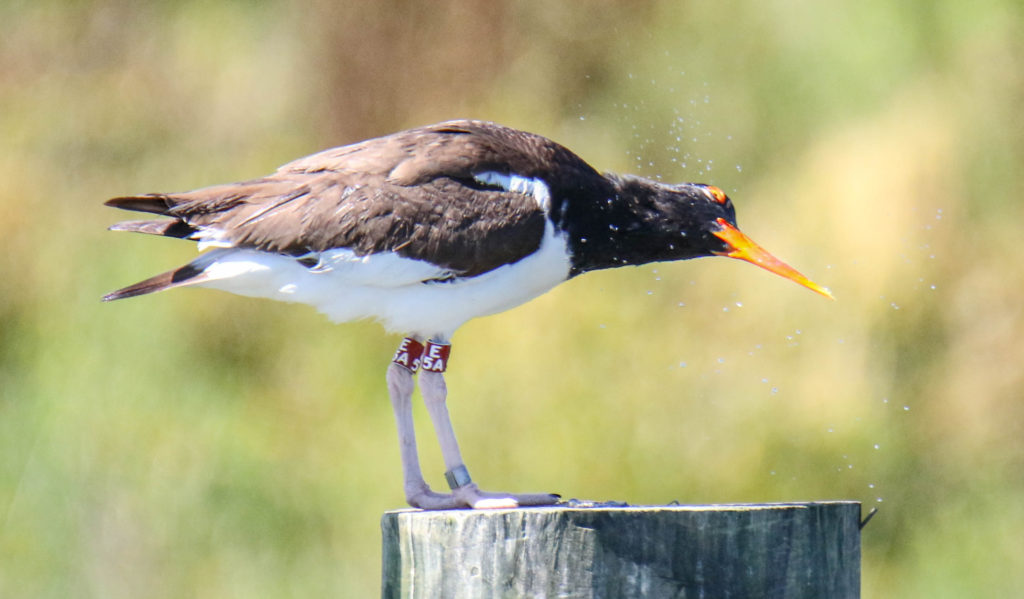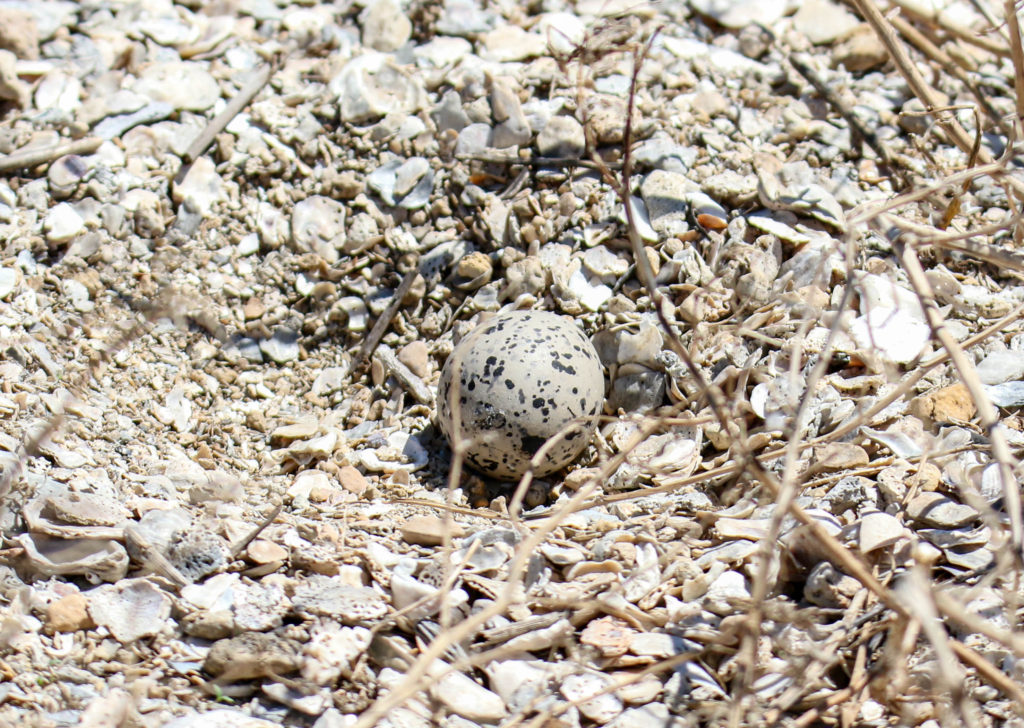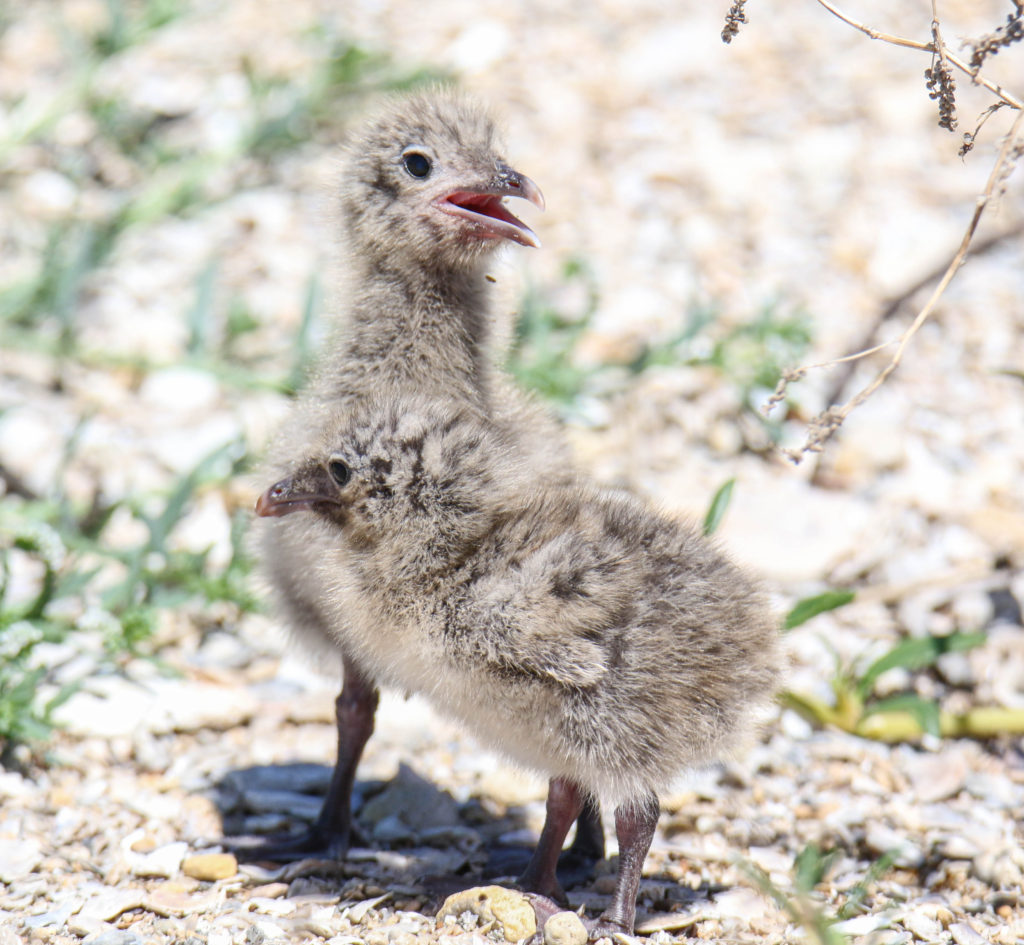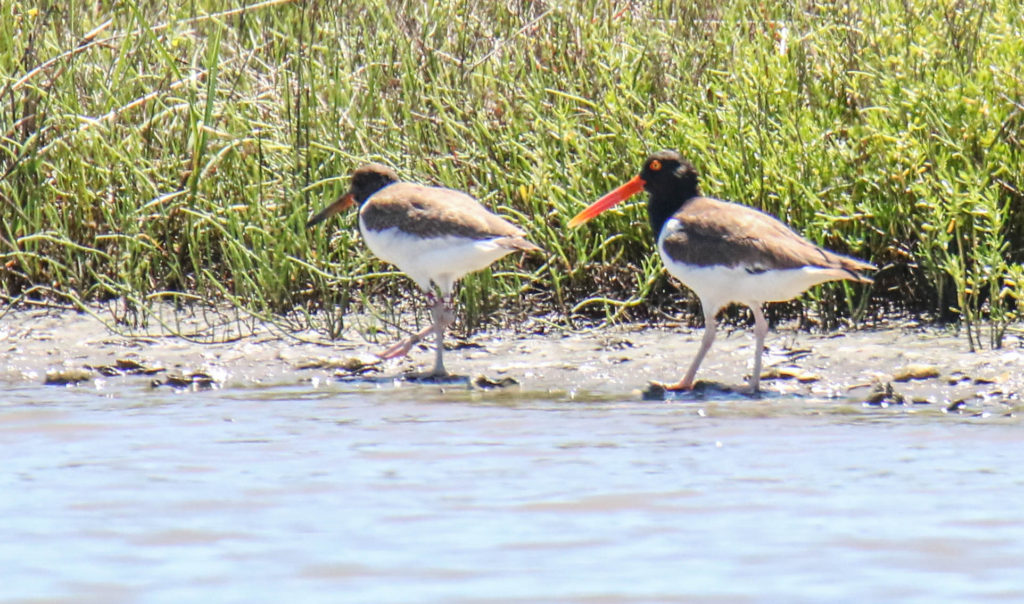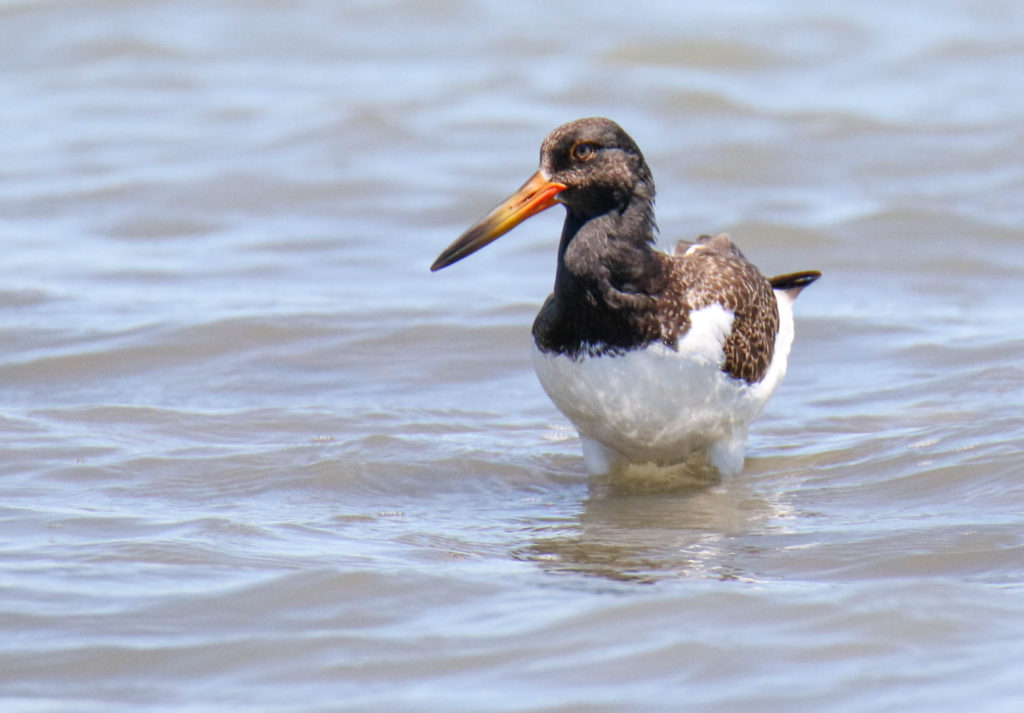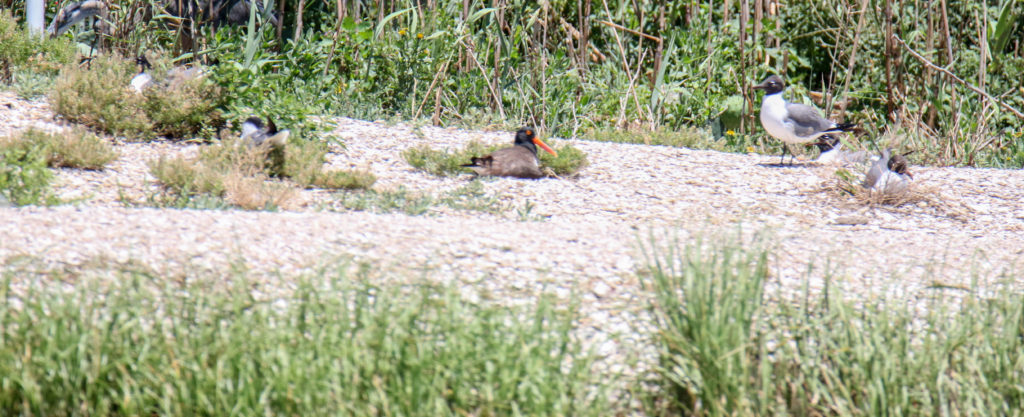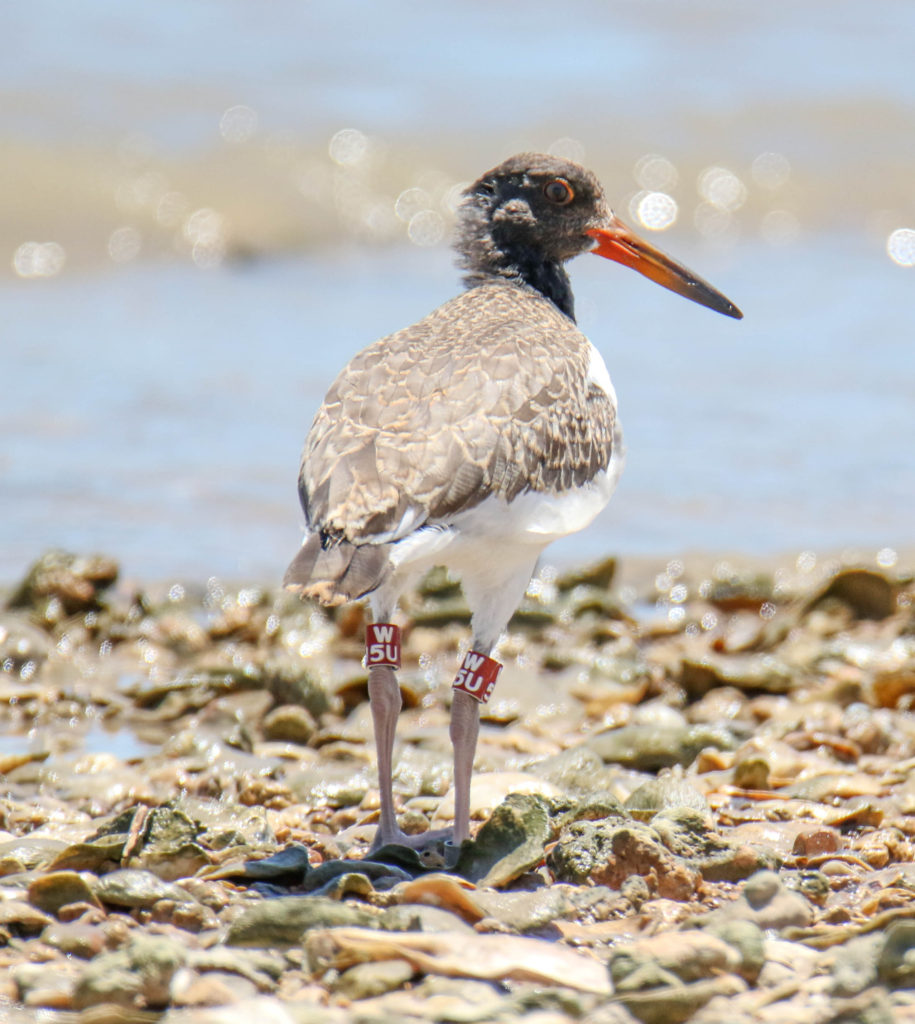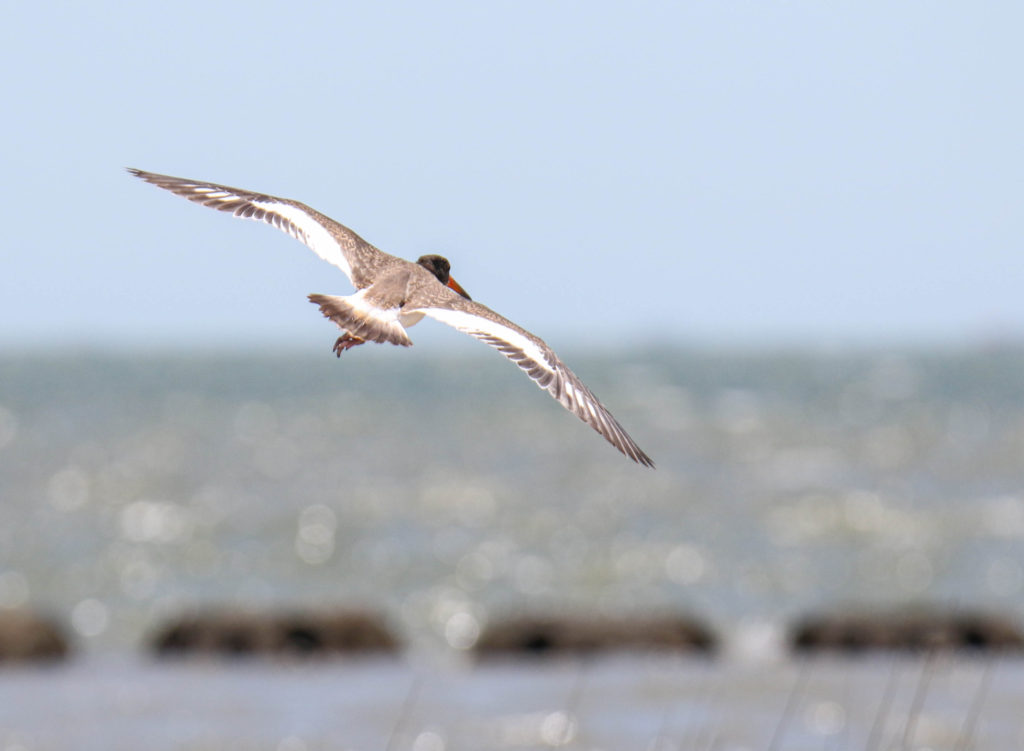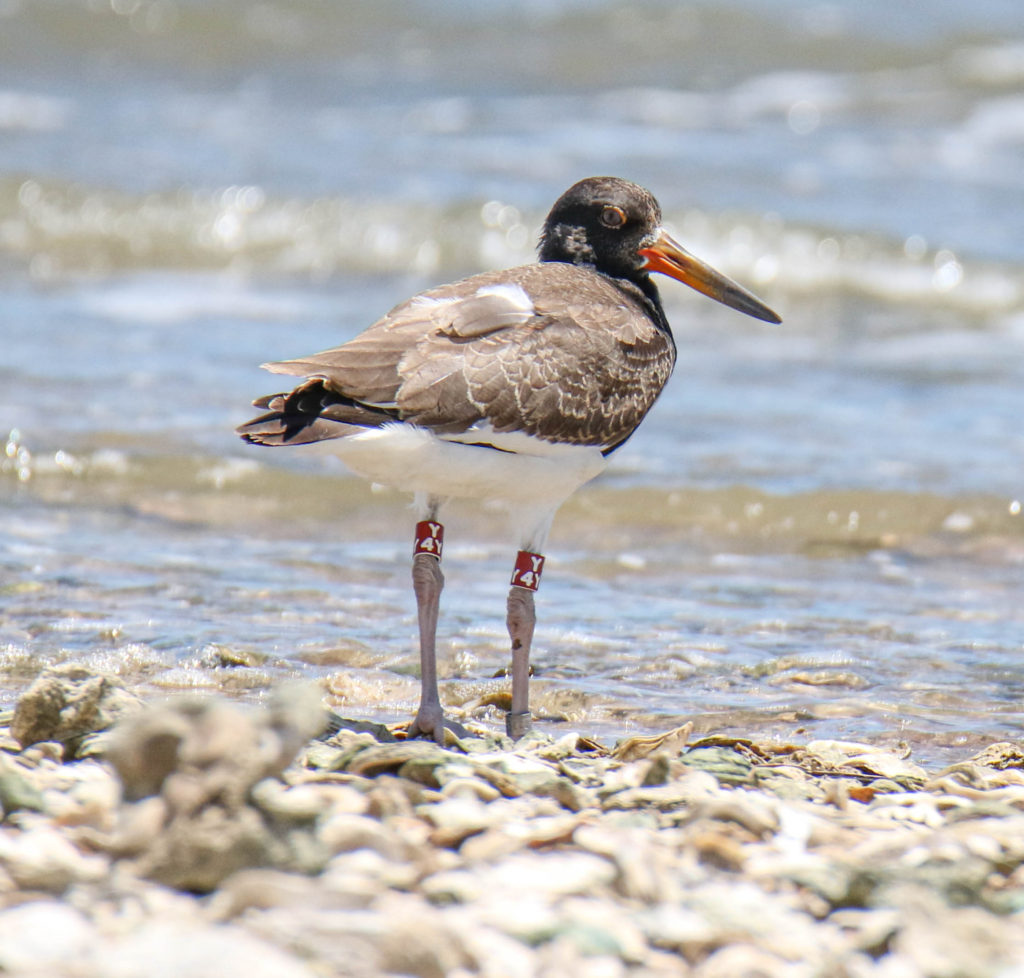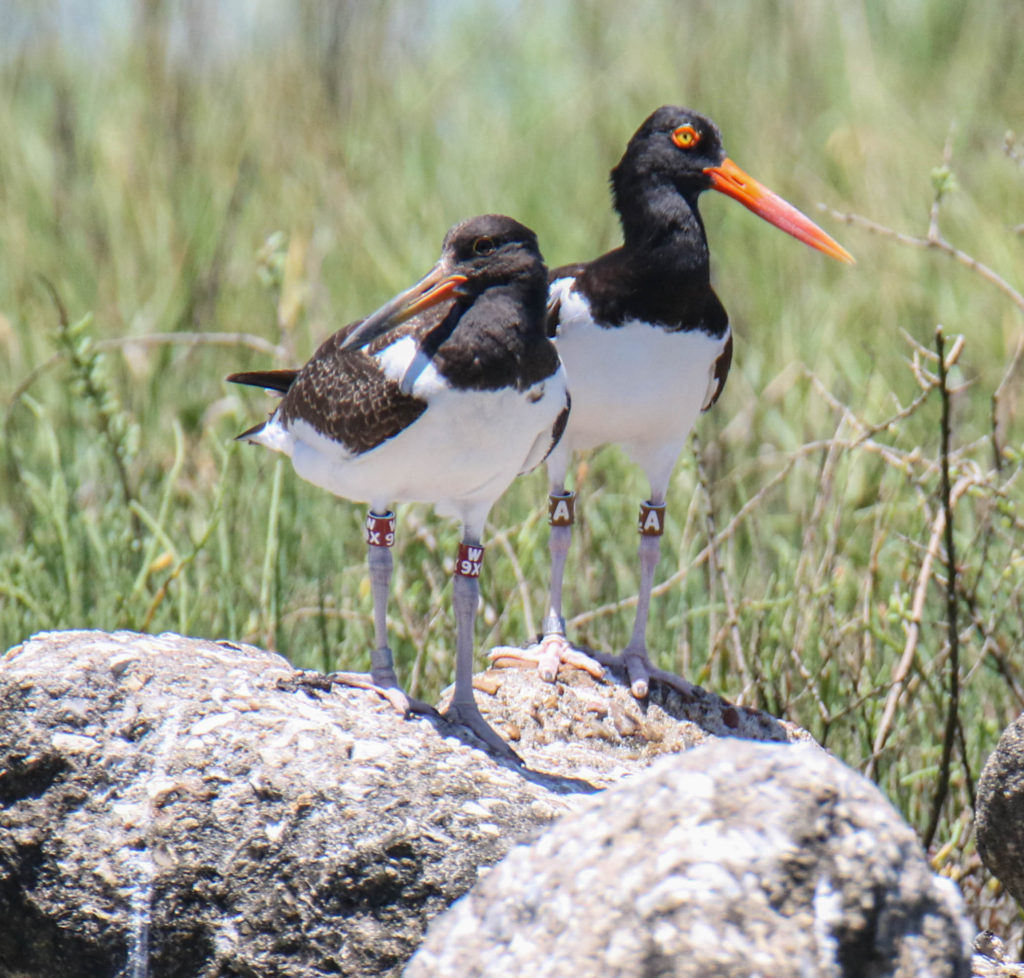By Susan Heath
On Thursday Alan and I were joined by Amanda Hackney of Black Cat GIS & Biological Services. It was time to do the colonial waterbird counts and Amanda is a great help doing those! The weather was beautiful for a change without much wind. So nice. We headed up towards Swan Lake. 20 & unbanded were incubating their nest so we left them to it.
LR & unbanded weren’t home. I guess they’ve given up for the season. The tried twice and failed both times. I believe the coyotes are giving them a fit. In Swan Lake proper, 11 & unbanded were hanging out along the shoreline watching our approach carefully. We didn’t see a chick but they sure acted like they had one. I decided to try to sneak up on them later so we moved on. K7 was home with just one chick.
His wife must have been off with the other two. Maybe this one is the smallest and it isn’t quite sure of its flight skills yet. Unfortunately, X3 & unbanded were ready for us when we went to check on them and we didn’t see their chick. It must be just about to fledge though. I’m sure we’ll see it next week when it comes out of hiding.
We motored back across the lake to check on 11 & unbanded again. This time Alan spotted them close to the base of the breakwater. As got closer, Amanda saw the chick sneak up into the vegetation to hide. Yay!
We headed back down to West Galveston Bay and went to Struve Luci. LT & JA were there without their chick. That was the first one to fledge this year and it quite able to be off on its own so that’s no cause for concern.
This might be though. We saw E5A & unbanded on one of the docks with only one chick.
Where’s the other one? While we watched, E5A delivered some food and the chick ran to get it.
E5A flew to a post and landed. I’m not sure what happened here but the photo is interesting.
Birds have to turn their heads to the side to see directly above them. Wonder what was up there?
12 & unbanded and their chicks materialized out of nowhere while we were counting terns and skimmers. Not sure where they came from but there they were! We didn’t see the other two pairs that nest on that island so we moved on.
Thankfully I did not have to check LH & JX’s nest again and raise the ire of the terns so we had a relatively calm visit to Jigsaw. YE & unbanded still had two eggs and X2 & W2Y had laid a new one egg nest.
It’s right in the middle of a bunch of gull nests, the same as their first two nests and so is destined to fail. This pair seems to be slow learners. Meanwhile, the gull eggs have begun to hatch and as much as I dislike the gulls, their chicks are still cute.
We proceeded on our route and found 16 alone again at 8 Mile Road. His mate F9A was on a dock nearby though so maybe she hasn’t left him after all. It was time for A4A & unbanded’s chick to be fledged so I was a little concerned when we arrived and didn’t see it. But, as we watched the adults the chick came out of the vegetation and joined them.
Yay! Another chick fledged. We moved on to South Deer.
A1A & unbanded and their chick were all out on a reef foraging in belly deep water.
It’s hard to check the bands when they do that! A5A & unbanded were still incubating their single egg in the middle of the gull nests. Doesn’t stand a chance when it hatches. Nothing was happening with the rest of the pairs there so we moved on to North Deer.
E8A & unbanded were still incubating two eggs. C1A & unbanded were still hiding their chick so it must not be fledged yet. It’s plenty old enough to fly so I hope nothing is wrong. We’ll see if we see it next week. YM & JH and their two chicks were not home. They were most likely showing their newly flighted chicks around the neighborhood.
Then we found something very surprising. If you’ve been keeping up, you will remember that JJ & P4 had a fledged chick that disappeared a week after we saw it fly. We haven’t seen it since. I kept hoping we would see it again but this week we discovered they have a new three egg nest!
That is a sure sign that they don’t still have a chick to take care of so something definitely happened to it. How very sad. I’ve never had a pair lay another nest when they had already raised a chick. The family group stays together for months which is how I know something happened to the chick. If it was still alive it would be with the parents. Wow. I’m sorry for your loss JJ & P4. I know you worked hard on that chick.
W5 & JC’s nest had failed as predicted because of the gulls. It was time to head into Jones Bay and check on the last few pairs but I had an extra mission this day. At the other end of the bay there is an island we call the mooring facility because its next to some big mooring buoys for the barges. I usually check it when we check the bays in Brazoria County but we haven’t needed to go to those bays for a while. Three weeks ago was the last time we went and we banded a chick at the mooring facility. I needed to go see if it fledged and heading down there while we were doing the east end of the bay was the easiest way to do that. So, we headed west on the GIWW.
It took us about 30 minutes to get there but when we did we were rewarded with this beautiful sight.
It made it! It’s father (F2A) was there with it. While we gazed upon its glory it did this!
Yay! It’s fledged and now I don’t have to go back there until next year because I know it made it. So awesome! We headed back the way we came and checked on the final pairs in Jones Bay. FR was absent but his wife was with their chick on one of the reefs.
CA was posing nicely with his chick on the breakwater around the Tiki Spoil unit.
That was the end of another satisfying day on the bay with the oystercatchers.
If you like oystercatchers and you want to support this project, you can make a donation (thank you!) on our website here. And how could anyone not like oystercatchers!
Current Stats for upper Texas coast from Swan Lake to East Matagorda Bay: 4 new adults banded, 7 nests being incubated, 26 failed nests, 3 nests with unfledged chicks, 1 nest with undetermined status, 19 chicks banded, 17 chicks fledged
Note: All trapping and banding for this project is in accordance with federal and state permits issued to Susan Heath, GCBO Director of Conservation Research. Bird handling by volunteers is only permitted in the presence of Susan Heath and volunteers are trained in proper bird handling techniques.

